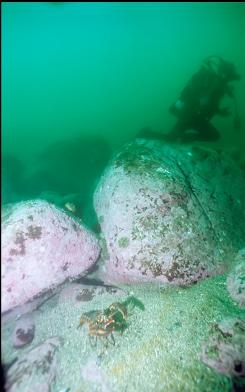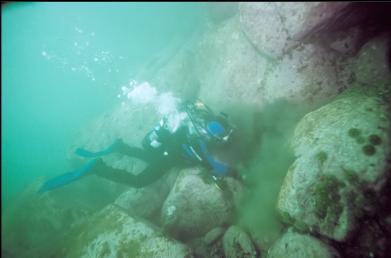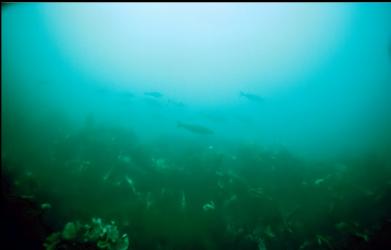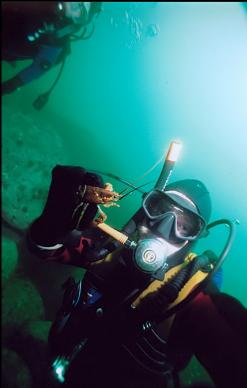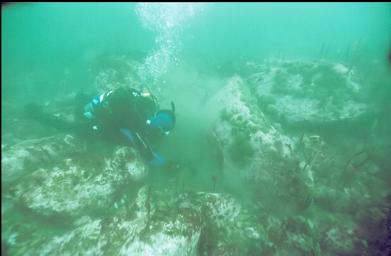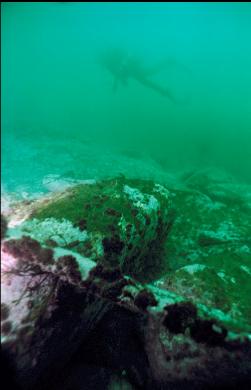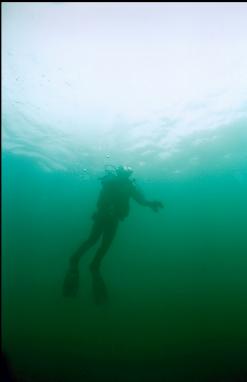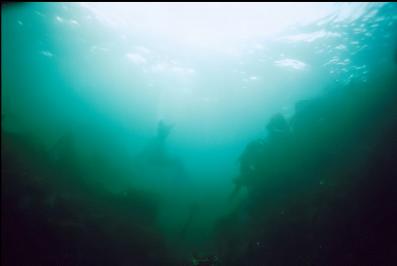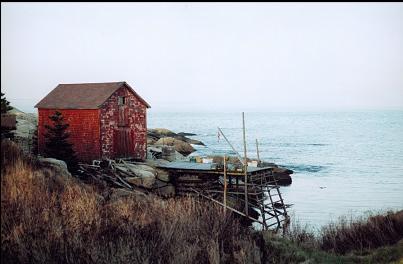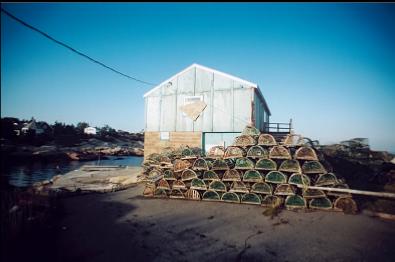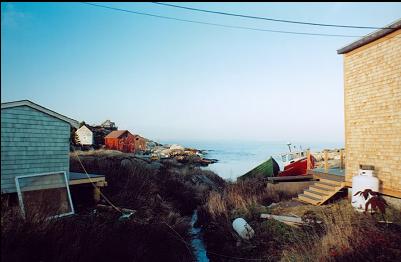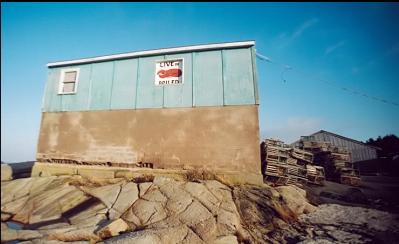
The reason we came here is to see what is left of the USMS (United States Mail Steamer?) Humboldt, a paddle wheeler that sank around the mid-1800's. According to the locals, it was carrying a cargo of religious medallions and gold pocket watches that spilled out in the shallows along with the coal. We entered the water in Portuguese cove from a cement dock (local diver Dave knows the owner) and swam out to the left. There really isn't much left of the wreck itself at all. There are a few small pieces of iron cemented to the rocks here and there, but you wouldn't guess that this is the site of a wreck. My guess is that most of the structure of the ship was salvaged. The topography is a slope of large boulders and solid, rocky bottom with pockets of sand in-between. Pretty much every local dive shop has a few medallions from these pockets on display or in a box somewhere and everybody seems to know at least one diver that found a gold watch-case recently. We fanned through a few pockets of sand, but didn't see anything except for some coal and a marble. Since there isn't really a wreck here, I don't know if there would be any legal issues if you kept anything you found (taking anything from a wreck site is technically illegal in Nova Scotia). Luckily, we weren't tempted with mountains of gold and all I kept from this site were some mediocre photos (that strobe-acting-up-thing again). There were the usual lobster and small schools of pollock, but not a lot of other marine life compared to some of the other local places we visited. Our maximum depth was around 45 feet and visibility was 30 feet.
